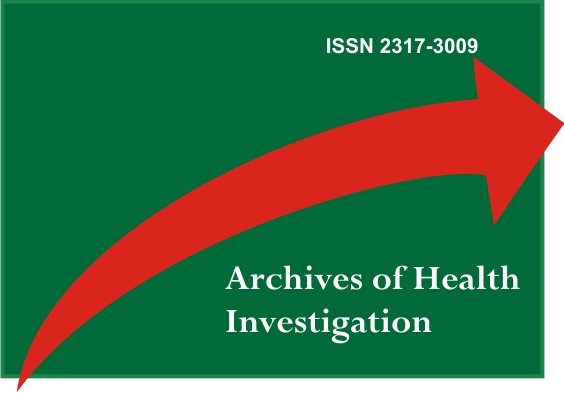Clinical Manifestations of Piogenic Granulomas: Case Series
DOI:
https://doi.org/10.21270/archi.v11i4.5237Keywords:
Granuloma, Pyogenic, Gingival Hyperplasia, Relatos de CasosAbstract
Pyogenic granuloma is an inflammatory hyperplasia of the skin and oral mucosa. His etiological factor is multifactorial, and it is usually associated with a reaction factor, due to repetitive insults, microtrauma and local chronic irritation, and also has a correlation with hormonal disorders. The gingiva is the predominant site, followed by the lips, tongue, oral mucosa and hard palate. They generally have the following characteristics: smooth, painless, from intense red to reddish purple. It occurs in a wide age group from 4 to 93 years, with a higher incidence in the second and fifth decades and women are slightly more affected than men. The treatment of choice consists of removing the associated irritant or completely removing the lesion. Therefore, the objective of our work is to describe the report of 4 clinical cases of pyogenic granuloma, as well as to discuss the different clinical manifestations and the appropriate treatment of this lesion.
Downloads
References
Regezi JA, Sciubba JJ, Jordan RC. Oral Pathology: Clinical Pathological Considerations. 4th ed. Philadelphia: WB Saunders; 2003. p. 115-6.
Ainamo J. The effect of habitual toothcleansing on the occurrence of periodontal disease and dental caries. Suom Hammaslaak Toim. 1971;67(1):63-70.
Kamal R, Dahiya P, Puri A. Oral pyogenic granuloma: Various concepts of etiopathogenesis. J Oral Maxillofac Pathol. 2012;16(1):79-82.
Rai S, Kaur M, Bhatnagar P. Laser: a powerful tool for treatment of pyogenic granuloma. J Cutan Aesthet Surg. 2011;4(2):144-7.
Sharma S, Chandra S, Gupta S, Srivastava S. Heterogeneous conceptualization of etiopathogenesis: Oral pyogenic granuloma. Natl J Maxillofac Surg. 2019;10(1):3-7.
Poudel P, Chaurasia N, Marla V, Srii R. Pyogenic granuloma of the upper lip: A common lesion in an uncommon location. J Taibah Univ Med Sci. 2018;14(1):95-8.
Agha-Hosseini F, Tirgari F, Shaigan S. Immunohistochemical analysis of estrogen and progesterone receptor expression in gingival lesions. Iranian J Publ Health, 2006;35(2):38-41.
Jafarzadeh H, Sanatkhani M, Mohtasham N. Oral pyogenic granuloma: a review. J Oral Sci. 2006;48(4):167-75.
Gomes SR, Shakir QJ, Thaker PV, Tavadia JK. Pyogenic granuloma of the gingiva: A misnomer? - A case report and review of literature. J Indian Soc Periodontol. 2013;17(4):514-9.


